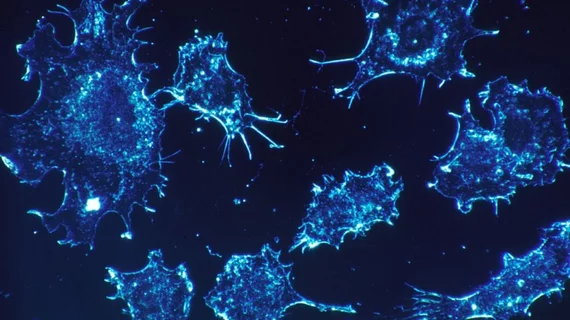Researchers use imaging tags, PET/CT scanner to better track cancer therapies
University of Pennsylvania scientists are piloting the use of special imaging markers to track the movement of one cancer therapy within the body.
They’re doing so to gauge the success of CAR T, an immunotherapy that involves genetically modifying a patient’s immune cells and inserting them back into the body to kill cancer. Such therapy has revolutionized care for some cancers, but doctors need help viewing the travel of cells to measure progress. Early results of the experiment were detailed last month in Molecular Therapy.
"Currently, the only way to know whether a gene or cell therapy is still present in the body is to regularly biopsy tumors or draw blood, which offer very crude measurements of the therapy,” Mark Sellmyer, MD, PhD, an assistant professor of radiology at Penn Medicine and lead author of the study, said in a statement. “With our technology, clinicians would be able to see, quantitatively, the number and location of CAR T cells that have lasted in the body over time, which is an indicator of the therapy's durability and potential efficacy.”
PET scanners are often used to track the efficacy of cancer treatments. However, CAR T cells appear identical to the body’s typical immune cells, which makes tracking them near impossible. Aiming to alleviate this roadblock, Penn scientists engineered CAR T cells with an enzyme derived from bacteria, rather than humans.
CAR T cells were then genetically tagged with a PET reporter gene and injected back into mice, tracking their movement using a PET/CT scan. Early results showed that CAR T cells began to accumulate in the spleen after a week, and in antigen-positive tumors after 13 days.
Penn researchers also noted that the body’s immune cells did not appear to recognize or attack CAR T cells as foreign invaders. They next plan to test the reporter gene-radio tracer pairing in a clinical trial with human patients, according to the study.

